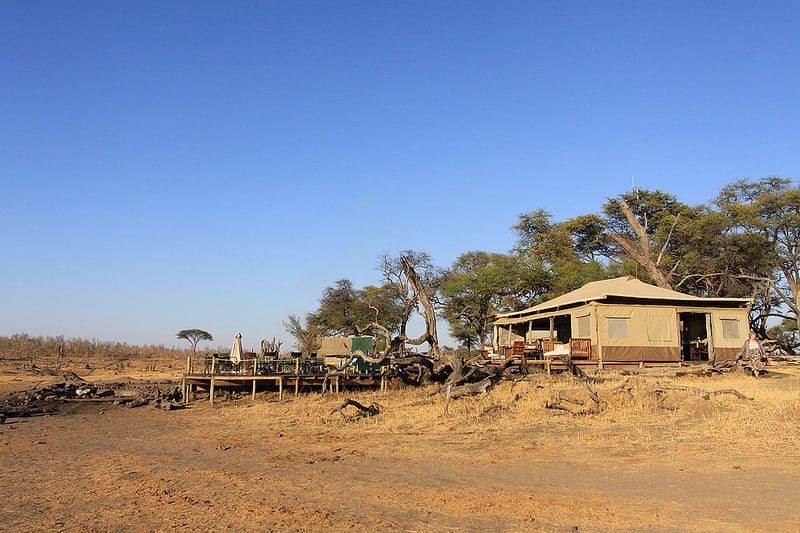Why wildlife protection in Zimbabwe relies on the growth of safari tourism

Skift Take
A recent decision by the Indian court reinforces the truth that the absence of tourism leaves animals vulnerable to mining and hunting industries, which are much less concerned with wildlife welfare.
Ray squats down and inspects the tracks carefully, his rifle held in the crook of one arm. "These are from yesterday," he says, pointing to where the fine dusty edge of the print has been blurred by the breeze. "It's a big male – very big. The one we heard roaring just before dawn."
That was an hour ago. I glance around the silent trees, half expecting to see a big cat staring back at me. Ray gets up and searches the ground nearby. "Looks like there are two lionesses with him," he says.
We walk on through the dry forest. At a glance the area looks dead, but closer inspection reveals signs of recovery: green shoots are appearing, the trees are gambling on rain coming soon. Ray leads on for about a mile then stops and inspects another lion print. This time the track is fresh. There is a stiff breeze blowing but the print is perfect. Ray nods and says: "They were moving around this morning." He glances at me. "Remember the rules. Stay with the gun. Never run."
I was wondering how I could politely ask: "Are you a good shot?" But I knew the answer: all guides in Zimbabwe are great shots. It's part of their training, an apprenticeship that consistently produces top wildlife guides who are supremely competent in those awkward social moments, like a lion charge. In Ray's case, I knew he had spent his life handling such tricky situations, having been born and brought up in this place: Hwange national park. It's a giant of a reserve, 5,400 square miles, bigger than Yorkshire or the state of Massachusetts, but just one element in a vast ecosystem that extends into Botswana, Namibia and southern Angola.
We move on again. The bush is thicker and visibility at times down to as little as 10 metres. Then we come to a small clearing. "They slept here," whispers Ray. He kneels down by a patch of wet, sandy earth – lion urine – and sticks his finger in to take the temperature. "They are very close."
He stands and finds the cats' trail leaving the clearing. We follow it. Then we see the dead buffalo, a female lying in the shade of a tree. Its eyes have been pecked out, but it has yet to be disembowelled. Ray touches the carcass.
"Cold." He frowns. "It can't have been killed last night: the birds wouldn't have got to the eyes yet. But if it was the night before last, why have they eaten so little?"
I'm standing, camera at the ready. There are fresh tracks all around us. I feel like I'm watching a chef who is about to whip open the oven door: "Voil
